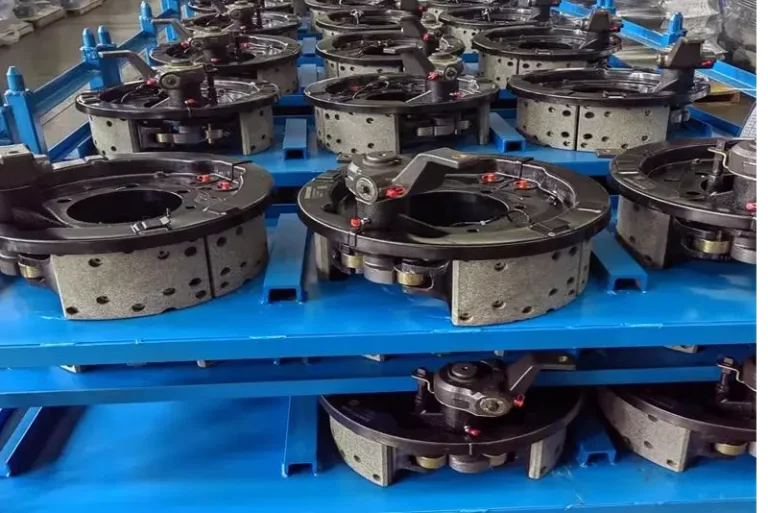A brake shoe is an essential component of drum brake systems, commonly found in various vehicles and industrial machinery.
The brake shoe’s main function is to generate friction by pressing against the inside of a rotating brake drum. This action slows down or stops the movement of a wheel or shaft. A typical drum brake system includes two brake shoes lined with friction material and mounted on a backing plate. When the braking mechanism is engaged—via hydraulic pressure or mechanical force—the shoes are pushed outward to make contact with the drum.
Heavy-Duty Vehicles: Large commercial trucks often combine drum and disc brakes, relying on brake shoes for their dependable stopping performance.
Industrial Equipment: Brake shoes are integral to machinery like cranes, elevators, and winches, helping regulate motion and ensure operational safety.
Brake shoes gradually lose their effectiveness as the friction material wears down with use. To maintain safe and reliable braking, regular checks and upkeep are crucial. Common signs of wear include thinning, cracking, or grooving of the friction material.
When brake shoes are worn out, they need to be replaced. The process involves removing the old shoes, cleaning the backing plate and brake drum, and fitting new shoes. Properly adjusting the brake system afterward is essential to ensure it functions correctly and to prevent early wear of the new components.
Although brake shoes remain integral to many braking systems, advancements in technology have introduced alternatives such as disc brakes. These systems use calipers and brake pads instead of shoes and drums, providing superior stopping power, enhanced heat dissipation, and lower maintenance demands.
However, brake shoes continue to be favored in certain applications thanks to their durability, cost-effectiveness, and capacity to manage heavy loads and high temperatures efficiently.
In essence, brake shoes are a key element of drum brake systems, essential for converting kinetic energy into heat through friction. Their design and material composition are tailored to meet the demands of specific vehicles or machinery. Consistent maintenance and timely replacements are vital to ensuring the reliability and safety of these components.


